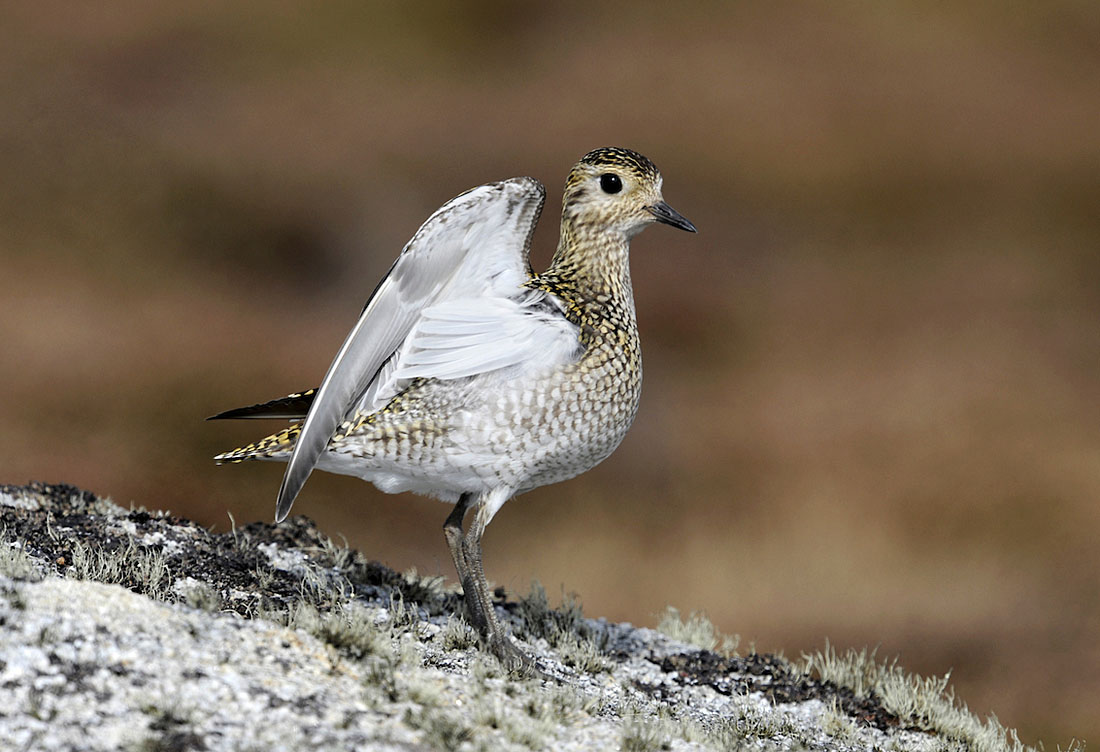Pity the poor plover
The Golden Plover is an upland breeder whose plaintive song is evocative of windswept northern moors, less so these days than in decades past. The species may not threatened globally but that’s not the case closer to home in the UK, the southern limit of the species’ Eurasian breeding range.
According the British Trust for Ornithology’s Bird Atlas 2007-2011, half the Irish breeding range and a fifth of the British breeding range have been lost in the last 40 years, and this mirrors a 13% decline in the UK breeding population. Even in Scotland, the heartland for the UK’s nesting Golden Plovers, according to the BTO the breeding population declined by 25% between 1995 and 2013. ©Paul Sterry
The problems facing nesting Golden Plovers range from the obvious – tree planting which destroys breeding habitat - to more insidious factors such as drainage. Drain the peat and you kill cranefly larvae through desiccation, and far fewer emerge as adults the following year. Adult craneflies are a vital source of food for Golden Plovers and other moorland species during the breeding season and this impacts breeding success. The situation is only made worse by global warming which results in hotter, drier summers. ©Paul Sterry
The breeding range of the Golden Plover extends from northern mainland Europe across Siberia and also includes Iceland. Many birds are tundra-nesters, breeding inside the Arctic Circle and northern individuals, males in particular, tend to have bolder and better-defined dark underparts. ©Paul Sterry
Newly arrived in southern England from its northern breeding grounds this juvenile Golden Plover faces another threat: outside the breeding season – in England, Wales, Scotland and Northern Ireland – it is classed as a ‘quarry species’ and can be shot between September 1 and January 31. In this day and age, it seems almost inconceivable that anyone would want to shoot these charming and inoffensive birds. But if you are licensed to kill and have the landowner’s permission that is exactly what you can do. ©Paul Sterry
Golden Plovers are widespread in the UK outside the breeding season. According to the BTO Birdfacts website the population rises from an estimated 49,000 in the breeding season to more than 400,000 during the winter months. There appear to be no available figures for the numbers shot in the UK and therefore the impact of hunting on the species cannot be assessed in any meaningful way. Perhaps that is something that should be addressed? ©Paul Sterry
Outside the breeding season Golden Plovers favour wet grassland with short vegetation and farmland. At this time of year the species forms flocks. These tend not to mix freely with other species although the occasional Lapwing may join them if birds are spooked by a Peregrine. ©Paul Sterry
New for the 2020 BPOTY Competition, the Conservation Documentary Awards invites photographers to submit 3-6 images and accompanying text that tells a compelling story about a bird-related conservation issue. For more details and to enter for this new award click the button below.






